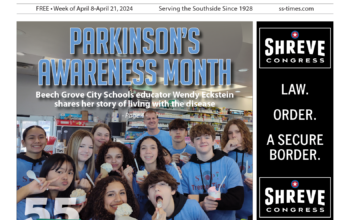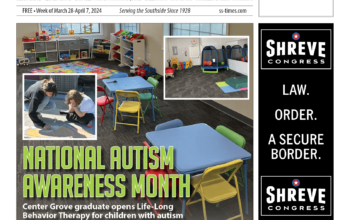Topics is a course at Southport High School taught by Kevin Sanders that analyzes major events from United States and world history through Hollywood films that attempt to portray those events. Students investigate historical documents and other sources to determine if a film is historically accurate.
The goal is for students to develop deeper understandings of the historical discipline while generating questions about the way the world is around them, along with watching classical films that have graced American and international screens.
Student: Kadye McMullen
Film Reviewed: Hidden Figures
The great Space Race was something to behold. People pushed the limits, they did what they thought was truly impossible. Among those great talents were some truly hidden figures, which brings us to the 2016 movie Hidden Figures. Hidden Figures tells the incredible story of a group of African American women who worked at NASA during the early days of the space program. The movie is based on the book of the same name by Margot Lee Shetterly. The movie does a phenomenal job of keeping itself accurate to real-life events, but there are some minor historical inaccuracies found within the movie that are worth noting.
For example, Katherine Johnson was not the only African American woman who played a big part working at NASA. She was, however, the most famous of these women, and her story is the focus of the movie. Another inconsistency that you find in the movie involves some of the characters. Paul Stafford is portrayed as the main villain in a sense. His character was invented to represent certain racist and sexist attitudes that existed during the 1950s. Throughout the movie Paul is seen bringing down Katherine numerous times. He disregards her multiple times during the movie. Katherine argues that she needs to sit in on meetings when new information is shown so she can do her work, but Paul says dismissively that women aren’t allowed in the meeting. Toward the end of the movie, Stafford’s fictional storyline includes Paul having a change of heart, which is explained when he brings Katherine a cup of coffee, showing that he has put aside his prejudices.
One of the most famous scenes in the movie is when Katherine is confronted by her boss because she keeps leaving for a long time to go to the bathroom. In the movie there are no bathrooms for people of color in the building that she is in, so she has to travel half a mile to use the restroom. This scenario is what plays out in the movie, but in real life Mary Jackson actually experiences that situation. Mary went to work on a project and was not familiar with the building so she had to go through a time-consuming search for a bathroom for people of color. As for Katherine, she didn’t realize that the restroom at Langley was segregated. The reason is because the white restrooms were not marked. It was a couple years before she was told, but she simply ignored the comment and continued to use the white restrooms. In the movie it makes the bathrooms a bigger deal. Al Harrison has a scene where he rips the “colored” sign off of the bathroom; this never happened in real life.
It is within speculation that the director added that scene to make a white savior character. Author Meeta Rani Jha wrote in her book, The Global Beauty Industry: Colorism, Racism, and the National Body that the white savior narrative is a recurring device in cultural representation in which white men and women get to be heroes and ‘rescue” people of color from their suffering and oppression. Toward the end of the movie the white characters that were terrible to the women at the start seem to just change overnight. Paul is a prime example of this, when he gave Katherine the cup of coffee and smiled at her it seemed out of character for him. The whole movie focused on him trying to stop Katherine at every stop because she is a woman of color. Al Harrison’s character seems to just not care at all about racism, which does not make sense in the time period. Race and segregation were everywhere back then, even in NASA, so it does not make sense that his characters seem clueless to it all. The events that you see in the film accurately or slightly inaccurately represent the struggles that these women faced during their time at NASA.

